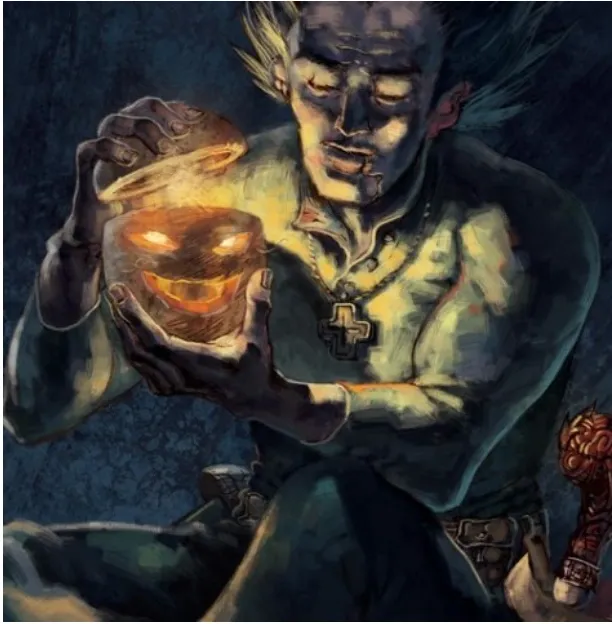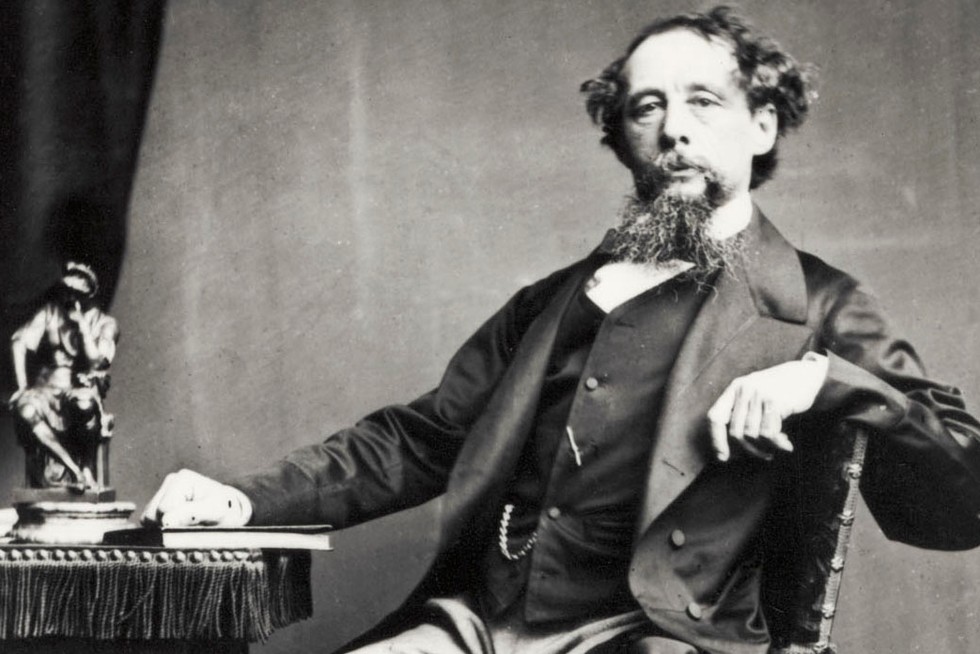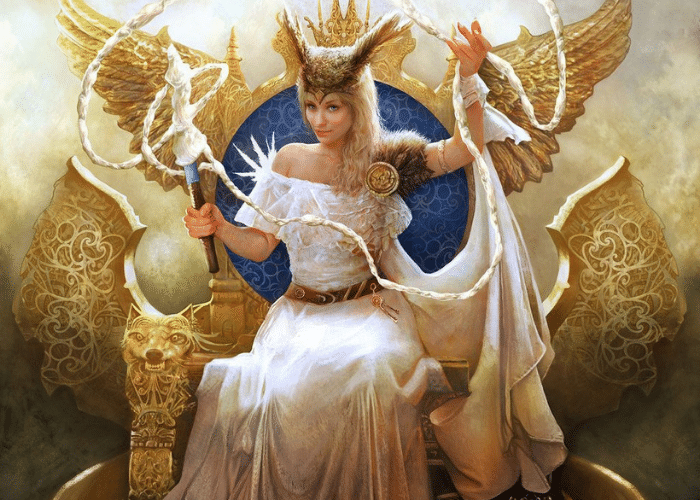Congratulations! If you are reading this article, you survived the one and only Friday the 13th which landed last Friday in this year’s calendar. Friggatriskaidekaphobia, or fear of Friday the 13th, impacts an estimated 17 – 21 million people in the United States. These folks alter their lifestyles and routines on any Friday the 13th. They try not to travel, most especially air travel. They refuse to conduct business. Some do not even get out of bed on this most feared day and date. Hopefully, you got past last Friday with nothing more than noting the date and exclaiming: “Oh, it’s Friday the 13th. I hope I have no bad luck.”
Friday the 13th consists of two elements: the day of the week and the number on the calendar. A history, of sorts, exists for both aspects and, surprisingly, not all bad. And yet, it is the confluence of both pieces of the bad luck puzzle which must combine to create disruption to ordinary affairs. No one trembles on Wednesday the 13th. Standing alone, Friday is not a harbinger of bad things to come your way. Indeed, Friday is quite often welcomed as the beginning of the weekend and end of the work week, it may even be payday. The marriage of the day Friday and the 13th day of the month results in this phobia for millions.
Historical events treat the number 13 poorly. Part of this perception arises from the good fortune associated with 13’s next door neighbor, the number 12. A sense of completeness rests with the number 12 in culture. There exists 12 Days of Christmas. 12 months are in a calendar year. There are 12 zodiac signs. We find twelve tribes of Israel. The number of gods of Olympus: 12.
13 has not fared so well. In Norse mythology, 12 gods attended a dinner party at Valhalla. Loki, the trickster god, had not been invited and crashed the party bringing the number of gods in attendance to 13. Loki then tricked the blind god, Hodr, to shoot an arrow with its tip poisoned with mistletoe at Hodr’s own brother, Balder. The poison arrow instantly killed the god of joy, light, and goodness, Balder. The Norse gods proclaimed that with Balder’s death, Earth got dark and mourned as it was a bad and unlucky day when 13 gods came together.
In Christianity, the Last Supper witnessed Jesus dining with his 12 disciples (totaling 13). The most infamous guest to arrive was the thirteenth – Judas Iscariot. Judas’ betrayal lead to the crucifixion of Jesus on Good Friday. 13 appeared a doomed number in culture thereafter.
Captain William Fowler, a New York socialite popular from the 1860s until 1880s, established the Thirteen Club in an effort to remove the persistent stigma associated with the number 13. The Thirteen Club met for a 13 course dinner on the 13th of each month at the Knickerbocker Club. 13 guests dined in Room 13 each month. Members of the club entered under a ladder below a banner which read “Morituri te Salutamus” (“Those of us about to die, we salute you.”). Four U.S. Presidents joined the Thirteen Club at one point in their careers. The Thirteen Club may have assisted the social standing of some, but appeared to have minimal impact on the poor reputation of 13.
As for Friday, it started off slightly better than 13. Enter Norse goddess Frigga after whom Friday has been named. Frigga, a goddess of marriage, also symbolized fertility, motherhood, love and sex. Frigga provided protection to homes and families. The Day of Frigga, or Friday, then stood for ancient family values and relationships. So far, so good.
As Christianity spread in the Middle Ages, no tolerance existed for pagan rituals or worship of pagan gods. Frigga, the goddess who invoked sex and fertility, had no place at the new party. Christian Church leaders worked to conflate the reputation of Frigga with the goddess Freyja. Freyja, also a goddess of fertility and love, further could perform magic, predict the future, and determine who would would die in battle. Freyja traveled by chariot drawn by two black cats. With Freyja’s dark side reputation wearing off on Frigga, the Church fathers recast Frigga a witch banished to a mountain top. In this new role, Frigga allegedly convened a gathering of eleven other witches plus the devil – for a total of thirteen – to plot fateful ill turns for each coming week. This effort to throw a pagan goddess under the bus may be the first instance of quite literally combining Friday with the number 13.
Side note: Norse god Balder’s association with the number 13 does not appear related to Norse goddess Frigga’s positive association with Friday. However, Frigga and Balder remain related as mother and son in Norse mythology. Each Friday the 13th stands as an eternal reunion for these Norse gods.
Casting Frigga away remained only part of the process to find fault with Friday. Numerous Biblical references portray Friday as simply a bad day. Eve tempted Adam with the forbidden fruit on a Friday. Cain murdered his brother Abel on a Friday. Friday witnessed the fall of the Temple of Solomon. Noah’s Ark set sail on a Friday with the Great Flood. Of course, the crucifixion of Jesus took place on Good Friday.
Beyond the reference to Norse goddess Frigga conspiring with her group of thirteen, historical accounts attributing misfortunes to Friday the 13th remained few. One notable Friday the 13th event took place on October 13, 1307. King Philip IV of France arrested hundreds of Knights Templar, charging them with fairly vague offenses. The Crown executed many of these Knights Templar in an apparent effort to reduce their power and confiscate their wealth. Some historians credit this massacre as the source of associating bad luck with Friday the 13th.
Nonetheless, by the 19th century, Friday the 13th clearly became firmly entrenched as the date of bad luck. A French play from 1834 included a character who claims that his birthdate of Friday, December 13, 1813 served as the event from which all his misfortune flowed. An 1868 biography of Gioachino Rossini solidly tied together events on Friday the 13th. According to the biography, Rossini considered Fridays as unlucky days and 13 an unlucky number. Rossini died on Friday, the 13th of November.
In 1907, author Thomas W. Lawson published his instantly popular novel, Friday the Thirteenth, which chronicled an unscrupulous stock broker who prayed on the superstitions of investors surrounding Friday the 13th to orchestrate a crash of the stock market. The conjunction of Friday and the number 13 became complete.
Need further proof that Friday the 13th is unlucky? The following events took place on Friday the 13th: The Germans bombed Buckingham Palace in WWII. A cyclone killed more 300,000 in Bangladesh in 1970. The Costa Concordia cruise ship crashed off the coast of Italy in 2012 killing 30. And, the ultimate proof, rapper Tupac Shakur met his fate in 1996.
Can 13 or Friday be saved? Frigga did well in establishing Friday as the day of fertility and family. Even the Medieval Church could not get rid of the name Friday or Day of Frigga. We may need a new goddess. One who can single-handedly take down the recording industry. One with immense popularity. One who, as a slight woman, can boost NFL television ratings through the roof. Of course, the modern goddess Taylor Swift.
Taylor Swift has been on a mission to salvage the number 13 in a way that Captain Fowler would take pride. Swift fearlessly embraces the number 13. In fact, for Swift, the number 13 is her good luck charm. Swift gushed in an interview about the number 13: “I was born on the 13th. I turned 13 on Friday the 13th. My first album went gold in 13 weeks. My first number 1 song had a 13-second intro. Every time I won an award, I’ve been seated in either the 13th seat, the 13th row, the 13th section or row M, which is the 13th letter. Basically, whenever a 13 comes up in my life, it’s a good thing.” Of course, her agents could rig the system by placing Swift in the 13th seat of the 13th row in the 13th section at every event. That little detail matters little to Swift’s legions of fans.
In Estate Planning, we often need to tackle fears. Many potential clients express fear of the Estate Planning process. For some, consideration of issues to arise after they pass feels as though they must confront their own mortality. We strive to show these clients the the decisions and issues are not about death, but rather how these choices can make everything both easier and certain for loved ones and friends. As early as the initial meeting, I begin to demystify the process by explaining the purpose of each Estate Plan document and how it functions as a critical component of their plan. The discussions gradually and organically become more business-like with focus on the necessary decisions to be made.
For couples in this process, I quite often end up drafting 26 documents in a Living Trust Estate Plan. I know the number is 26 as I use tabs with letters A-Z in organizing, indexing and binding the final documents for the clients. I now hope that these couples do not think too deeply to recognize that the process results in 13 documents per each person. We do not want to add fear of the number 13 in the planning process.
You keep trying Taylor Swift. You have much history to overcome battling against Friday the 13th. You have upstaged Patrick Mahomes at Kansas City Chiefs football games. So, who knows, perhaps you can be the cure for the 20 million suffering from friggatriskaidekaphobia.







